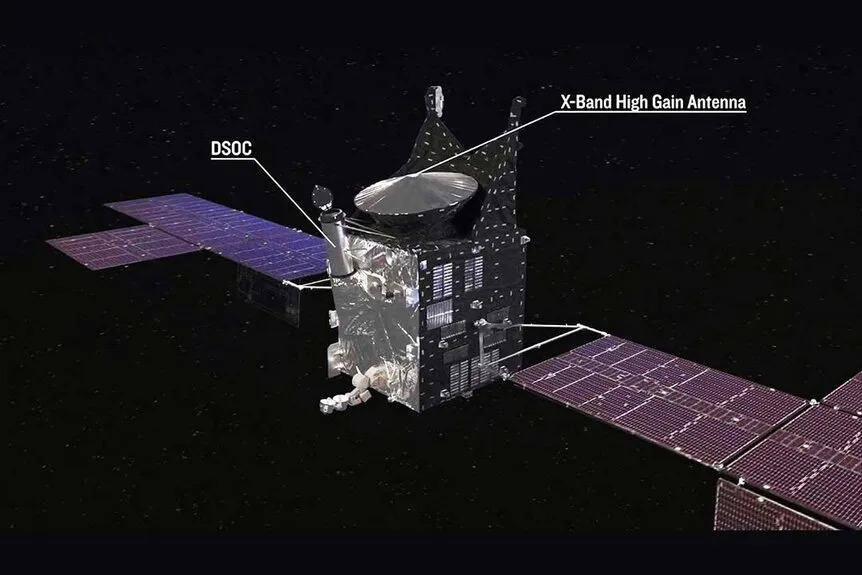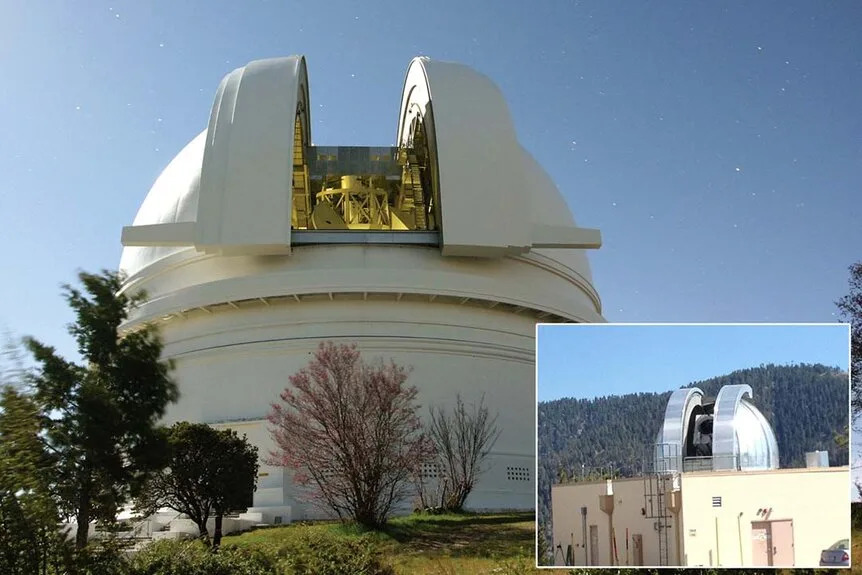SYFY | Laser Beam Message Traveled 10 Million Miles Across Space to Earth
Lasers are a staple of the science fiction genre, generally used in various seemingly magical technologies or as weapons. Lasers played a significant role in the sci-fi classic Farscape (streaming now on Peacock) by way of handheld energy blasters and larger space-based light weaponry. Here in the real world, scientists just struck California with one of the most impressive space lasers in history, and it could revolutionize the way we communicate with craft and crew in space.
.
.
Earth Receives a Distant Laser Message from 10 Million Miles Away
.
NASA’s Deep Space Optical Communications (DSOC) experiment hitched a ride aboard the Psyche spacecraft, headed toward the large metallic asteroid of the same name. The experiment is made up of instruments capable of sending and receiving infrared laser light across incredible distances.
RELATED: What to Know and How to Watch NASA’s Launch to the Asteroid Psyche
The experiment is planned to last two years, sending and receiving laser signals from increasingly distant locations on its way to its final destination. By the end, it will (hopefully) be able to communicate cleanly from the asteroid belt between Mars and Jupiter.
.

This illustration of the Psyche spacecraft shows the locations of the DSOC technology demonstration and X-band high-gain antenna Photo: NASA/JPL-Caltech/ASUImage: Ground telescopes
Of course, we’ve sent and received signals from much farther distances before and we’re still doing it all the time. We have spacecraft happily whizzing around Jupiter and sending back information, not to mention the Voyager spacecraft, still eking out a living in interstellar space. But optical communication would offer significantly higher bandwidth. The goal is to build space-based communications systems with between 10 and 100 times the bandwidth of conventional radio-based communication. That’s because near-infrared lasers have tighter waves than radio, allowing more information to travel in a smaller package.
While the mission is still in its early stages, the team behind it recently achieved a milestone when they gathered first light from the experiment on November 14. From a distance of about 10 million miles (16 million kilometers), about ten times the distance to the Moon, DSOC locked onto an uplink laser beacon transmitting from JPL’s Optical Communications Telescope Laboratory near Wrightwood, California. Using that beacon, the DSOC adjusted its angle to point back at the Hale Telescope at the Palomar Observatory in California. The successful back and forth between Earth and the DSOC marks the most distant demonstration of optical communication in history.
The Future of Laser Communication in Space
“Achieving first light is one of many critical DSOC milestones in the coming months, paving the way toward higher-data-rate communications capable of sending scientific information, high-definition imagery, and streaming video in support of humanity’s next giant leap: sending humans to Mars,” said Trudy Kortes, director of Technology Demonstrations at NASA Headquarters in Washington, in a statement.

The 200-inch (5.1-meter) Hale Telescope at Caltech’s Palomar Observatory in San Diego County will receive high-rate data from the DSOC flight laser transceiver and (inset) the ground-based laser transmitter at JPL’s Table Mountain will send low-rate data to the flight transceiver. Photo: NASA/JPL-Caltech/Palomar Observatory
The instrument works by sending bits of data encoded in individual photons of laser light. Once those photons are received at the Hale Telescope, the data can be extracted from the photons and transformed back into ones and zeroes. As the Psyche spacecraft and the DSOC experiment travel farther away, scientists are working to refine the systems and control pointing the downlink laser. The farther it is, the more difficult it is to hit the receiving telescope with the laser beam, but it’s even more complicated than that.
RELATED: Everything You Need to Know About NASA’s “Asteroid Autumn”
The technology also needs to take time and motion into account. When it gets to its final destination in the asteroid belt, the light travel time will be about 20 minutes, that’s plenty of time for both the spacecraft and the Earth to have moved. Any light beams being sent between the two will need to compensate for that movement. The DSOC needs to point not to where the receiving telescope is, but to where it will be.
A transition to optical systems should lead to a revolution in space-based communication and it might be just about as good as we can do, at least until we find a wormhole and crack FTL communication.
In the meantime, you can watch Farscape streaming now on Peacock. No lightspeed lag.


@[email protected]


 Memento Maxima Digital Marketing
Memento Maxima Digital Marketing






